#Addendums Archives and Appendecies
Explore tagged Tumblr posts
Text
+006: The Xbox Adaptive Controller is for everyone

Addendums, Archives and Appendecies is extra, off topic writing in addition to the regular CANON FIRE entries. You can support more writing like this on Patreon.
Of the several mass market options for accessibility controllers, the Xbox Adaptive controller easily leads the pack. The initial package doesn’t include much, but in exchange it packs a huge host of features, expansive remapping software and compatibility with more devices than any competitor. Alongside a dedicated accessibility development team, it’s easy to see that Microsoft has real investment in gaming accessibility.
It’s those same features that make the Xbox Adaptive Controller a fantastic device for everyone. Marketing and coverage of the XAC has focused on the disability angle, but there’s been little talk or curiosity about how the damn thing works, and the absolutely tremendous features of this unassuming package. If you’re like me, and have any DIY spirit, or love the bespoke controls of arcade games, the XAC should have your attention.

The Xbox Adaptive Controller is designed similar to other adaptive setups, using standard 3.5mm TRS/TRRS headphone jacks to connect external controls. One of the least documented features of this system is exactly how many options there are for switches, outside the officially branded ones. The TRS connections enable the XAC to use not only dedicated accessibility switches, but any switch that uses TRS jacks. This includes several accessories for the 8bitdo Lite SE 2.4ghz, the 8bitdo Keyboard, or even something like sustain pedals used for synthesizers. There’s also a small industry dedicated to creating accessibility switches, and if you’re handy you can even create your own out of generic switches like pushbuttons, knobs, and flick switches.
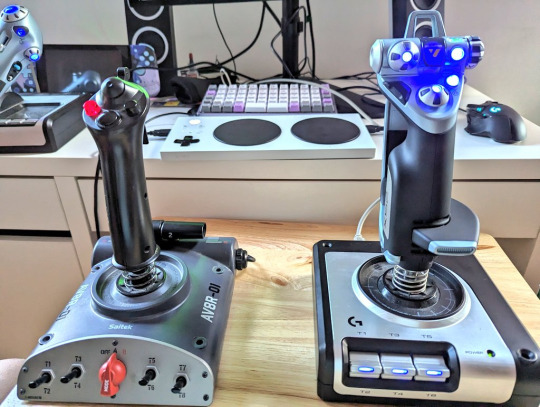
The XAC’s headliner feature--the one that sold me on the device, and puts it above all the rest--is the ability to plug in USB controllers. One either side of the XAC are USB ports, each which maps to one half of a standard Xbox controller, allowing you to access the left stick, right stick, face buttons and triggers by plugging in two devices to combine them into a single unit. Any HID gamepad can be plugged in, though you’ll need to experiment to see which ones are recognized, and which inputs are available to be remapped, since the XAC will only recognize a select number of them.
A costly series of individual switches can be replaced by a single controller, offering multiple inputs and alternative analog solutions such as sliders, trackpads, handheld joysticks or flight sticks.

As an example, I built a mech cockpit setup for Armored Core by using two flight sticks and a set of pedals. Each flight stick controlled one analog stick, with the triggers and thumb buttons used to control the arm and shoulder weapons, and pedals controlling the ascent and boost functions. The two large buttons on the XAC itself acted as the scan and repair functions, two important, but auxiliary functions.
I’ve also personally tested a few 8bitdo Switch controllers, as well as arcade sticks, which were able to be paired with the XAC as well.
A big advantage of the XAC is that by doing this through hardware, you can store multiple control profiles on the device itself, then migrate the setup between multiple devices, including other systems. Through the use of a controller converter, I’ve been personally able to use the XAC on multiple generations of Playstations and the Switch. All without the need to use software remapping.

If playing on the Xbox or Windows, however, you do get access to Xbox Assist--formerly Copilot--which allows you to pair the XAC with additional controllers, once again being read a single unit. This allows another player to assist in activating other buttons, or use one controller as the primary device, while complimenting it with buttons on your other controller.
I’ve used this to combine my controller with my pedal set, handling stick clicks with pedals, allowing me to sprint and melee but stepping on a switch. You could also use something like the Xbox Adaptive Joystick, and handheld joystick in the style of the Wii nunchuk, to control the primary movement, while resting another controller on a flat surface and pressing the buttons.

It’s worth noting that Xbox Assist isn’t restricted only to the XAC, and can be used with various other Xbox controllers, including the Adaptive Joystick, 8bitdo Lite SE, or just two standard controllers.
These options give a huge amount of flexibility to the controller, allowing you to mix and match what parts of a modern control setup work for you. Modern controllers have mostly agreed on a standard for button layouts and shapes, but at the cost of the more unorthodox options and ideas that made controllers part of the game or console experience.
The XAC gives you ways to interface with the same games, with remapping software that makes up for the often underwhelming options built into the consoles themselves. Buttons can even be remapped on the fly by physically plugging and unplugging cords into ports, allowing you to experiment with different setups quickly. It’s totally analog, and has the same satisfaction as manually rewiring devices and circuits.
Modern controllers are designed to be invisible. To meld into the background and allow experienced players to not think about how they control their characters. But when that doesn’t match someone’s ability or experience, the opposite can happen, turning a controller into something that fights against you. The same features that allow disabled people the flexibility to build a solution that works for them also gives everyone the option to change the way we interface with games, and build something new.
For interested parties, I've collected more info on the XAC below:
6 notes
·
View notes
Text
+003: Desert Strike EP

Addendums, Archives and Appendecies is extra, off topic writing in addition to the regular CANON FIRE entries. You can support more writing like this on Patreon.
Based on Electronic Arts’ game of the same name, Fatima Al-Qadiri’s Desert Strike EP is a “soundtrack to a virtual war”, based on her experience playing the game in her childhood home in Kuwait. But while she and her sister retreated to the virtual war, the effects of a very real war were being felt right outside her door. The Gulf War had concluded just a year earlier, and the effects of the occupation still reverberated through the country.
Based on the conflict in the Gulf, Desert Strike saw you piloting a helicopter taking down various targets under the control of a caricature of Saddam Hussein. Operation Desert Shield began shortly after development of Desert Strike began, with its development concluding shortly after the end of Gulf War. Its proximity to real war brought it a morbid sense of reality.

For Al-Qadiri, playing Desert Strike with her sister was a way to wrestle back control of a situation that a child couldn't comprehend. A way to apply rules and order to a daily life whose routine was dissolved.
That distant, unreal atmosphere pervades her EP. The synth backed melodies sound far away, hard to focus on through the violence of the percussion. Kick drums reverberate as if through a deserted theater, while snares mix amongst sounds of gunshots, exchanged magazines and clattering bullet casings. Mournful choirs gently fill the space, speaking for the ghosts left behind.
Desert Strike conjures images of sub-bassments, rumbling with the sonic debris, digitally crushed gunshots mixed with real ones. It's a march through sunlight that no longer seems to brighten the day. The sound of a ticking clock that no longer tells time, not because it's malfunctioned, but because time has lost meaning to all its observers.
At some point during the album, I always find myself drifting off, the melodies fading to the background, tracks bleeding into each other. The percussion becomes indistinguishable from the gunfire. Was that a snare drum, or a gunshot? Each cracks through my mind the same way.
---

In an interview with The New Inquiry, Al-Qadiri mentioned she can no longer play videogames. “Every time I attempt it, I am overcome with depression. Immediate depression. Whenever I try, my skin starts to crawl, I just put it down immediately.”
It made me think about my own relationship with games. I was born at the end of the Gulf War, in Saudi Arabia, and shortly after moved to Chicago, where I'd spend most of my life. I grew up watching the invasion of Afghanistan and Iraq from a distance, and hearing about the Egyptian revolution through phone calls from my father's family. I grew up experiencing war through a screen.
The Gulf War is said to be “the first war fought through television”, with channels like CNN making their money and reputation through its coverage. It only became more true for future conflicts, as I watched the media write and rewrite events in the Middle East, twisting them into propaganda. I watched videogames tell bigger lies in higher fidelity. I spent my teenage years pointing a digital gun at people who looked like me.
I never played Desert Strike. But I did play one of its sequels, Jungle Strike. I have vivid memories of its first level, a siege on a Washington DC that's been overrun by terrorists. Another terrifying image that was fed into the imaginations of Americans in the coming decade.
Maybe that's why Al-Qadiri's second album, Brute, resonated so much stronger with me. It's of a piece with Desert Strike--urban chaos, gunshots and distant, rumbling synths--but made of snapshots of police violence and protests. Images familiar to me here in Chicago. The heart of the "enhanced interrogation" techniques exported worldwide. A city I've seen trap protestors by raising the bridges to cut them off, shutting down train lines and raising walls of armored cops to close ranks on them. I've seen the rhetoric that justified US wars return to assure us this is the only way to keep us safe.
That distance--the gap of a few years that kept me from experiencing the Gulf War firsthand, those miles that kept me out of a Middle East toyed with by US intervention--it feels a lot smaller these days.
I keep playing war. I keep picking up the gun. But sometimes the toy looks too much like the weapon, and I find myself hesitating.
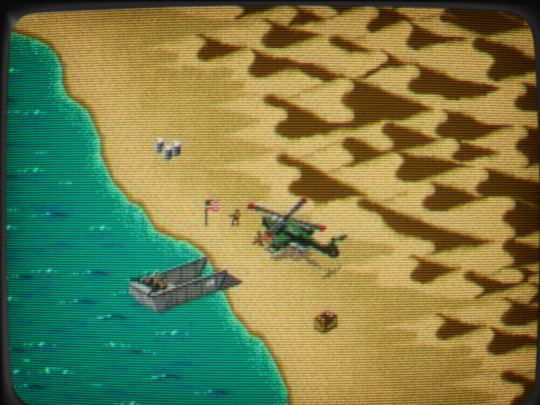
Desert Strike EP and Brute can be listened to and purchased on Bandcamp:
#desert strike ep#fatima al qadiri#music#addendums#archives#appendecies#desert strike#sega genesis#genesis#action#Bandcamp
3 notes
·
View notes
Text
+002: The Problem with “Good Game Design”

Addendums, Archives and Appendecies is extra, off topic writing in addition to the regular CANON FIRE entries. You can support more writing like this on Patreon.
In games we have a tendency to try and solve everything, to get the optimal, most ideal solution. Sometimes that transfers to how we approach criticism too. There’s an idea that game design is an art that can be perfected, an art that we can test and measure until we’ve achieved perfection.
A million game design essays and industry post-mortems will have you believe that every year we are getting closer to the platonic ideal of the medium. That we make continued progress towards the unspoken agreement of what games should look like.
This is where we get what I call “prescriptive game criticism”.
Prescriptive game criticism goes in with a predisposed set of ideas for what makes a good game. It looks to fit the object of critique into its framework, rather than fit the framework to the object. It overlooks the context and application of why certain choices were made, and the context they were made in.
A prescriptive approach might take the design choices of a successful game, and turn them into lessons to be applied in making other games, or hold them as a standard to judge other games by. It might observe the way one game builds a world makes it successful, despite its simple combat, and see the depth of another game’s combat system, and so naturally combining both would make the ultimate game. Right?

There’s nothing inherently wrong with this sort of theorycrafting, and it’s easy to see why it’s so popular. It’s entertaining, and often even useful, and it gives us a sense that we’re coming to a greater understanding of a medium we love. But often this rigid approach turns into a rulebook of good and bad design, a checklist you use to judge work on terms you’ve already decided on before you started, removed from context and content.
These approaches often unknowingly replicate underlying ideologies. Even a simple statement like “games should award skillful play” dismisses a huge swathe of games and can reinforce flawed ideas of meritocracy. Look at the way that people consider skill at videogames to be a prerequisite for having opinions on them. Or the way the fighting game community will often tell you to settle arguments in a first to three, as if your skill means more to your legitimacy than the content of the argument.

If that still feels like a reach, let’s take a look at the concept of “flow”, which is often used as a measurement for positive engagement and game balance:
As defined by psychologist Mikhail Csikzentmihalyi, flow is a state in which people are so involved in an activity that nothing else seems to matter, achieved when the goals are clear, and there is balance between the difficulty of the task and the skills of the person doing them.
It sounds like game design 101, right? In fact, you’ll find Csikzentmihalyi’s work cited all across game design essays and post-mortems, with many words written on how to induce this state through game design. Jenova Chen, designer and founder of thatgamecompany, even named a game after Flow, and designed an accompanying system to dynamically adjust difficulty, directly citing Csikzentmihalyi’s principles.
Chen specifically draws from the argument Csikszentmihalyi makes in Flow: The Psychology of the Optimal Experience, his most cited work. But for such a frequently invoked argument, the rest of the book presents a disturbing picture.
Csikzentmihalyi presents flow with the framing of a self-help book, as a positive force that can enrich all points of life, as almost a moral good. Among the examples he uses to prove his argument range from the obvious--chess, listening to classical music, playing sports--to the absolutely bizarre--like parenting, factory labor, or even homelessness. No exaggeration.
So if inducing a flow state is a measure of good design, does this mean society is well designed? Wealth inequality?
Incredibly, Csikszentmihalyi seems to believe so! As the book continues he veers into an argument that we should dispense with moral relativism and embrace absolute judgements of which societies are best, with Western society of course being the model, thanks to its meritocratic structure allowing the most opportunity to achieve flow states, and therefore happiness. Even those on the bottom rung can achieve flow here, and those who can’t are simply broken and shouldn’t be factored into the equation.
Again, this is no exaggeration. If anything, I left out a lot of other examples that I found more distasteful.

It’s not as if these underlying ideas haven’t made it into people’s work either. The psychological work done on flow has been used to create exploitative games, and to gamify labor and education to replace real satisfaction with a drip feed of short term rewards, and arguably even influences our interactions with social media.
I say this not because I believe everyone using the term “flow” is cosigning some conservative cultural clash, but to illustrate the assumptions that go unchallenged when we adopt a framework without consideration.
“Good design” sometimes doesn’t look much different than exploitation, and many effective works directly clash with traditional ideas of what a good game looks like. Descriptors like “depth” or “immersion” frequently exclude more feminine modes of play, like dress up or socialization games, which can be rewarding in other ways. Or shut out games that intentionally introduce friction to make it intentionally unpleasant to engage with.
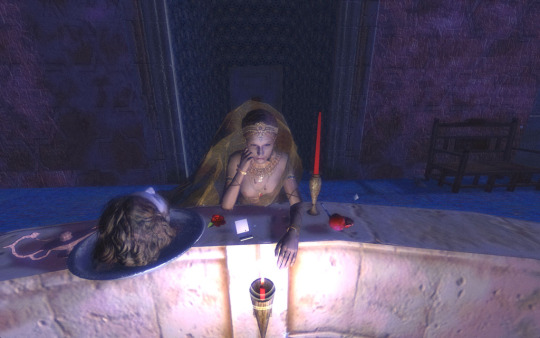
I think fondly about Fatale, the most dreadful, boring 40 minutes I’ve ever spent with a game. It’s nothing but slow movement between points, observing tableaus and reading Oscar Wilde quotes. And yet, years later I still remember it, and the powerful impression it left on me.
Had I been given more freedom to explore the environments and set my own pacing, the whole thing would have fallen apart. The lack of agency, the dreadful atmosphere of the aftermath, IS the point. Fatale strains against our expectations and desires, and it's that friction that gives it thematic weight. Or makes it a total waste of time for you.

Once you begin to break down the assumptions that we’ve made about “good game design”, it kind of breaks the idea that there’s an objective measure for the quality of a game. Which means we have to accept that something that works for us, might not land at all for others, and vice versa.
So if we throw away those prescriptive ideas of what a good game looks like, what’s the alternative?
For me, I like to approach games with what I call a “descriptive” lens to criticism. To be clear, I don’t want to present yet another dichotomy, between the good and bad games crit. Rather, a descriptive approach is one that I think of as widening the angle from a narrow viewpoint to capture a work’s context, intentions, and even our own personalities and worldview.
It requires us to take a look at what a work is doing, why it makes certain decisions and decide if it achieves them within its context and constraints. Or if we even agree with those choices. There are many games I would have enjoyed more if they were designed differently, but that doesn’t mean they’ve fundamentally failed because of it.

To move this out of the realm of the abstract, let’s return to one of those games traditionally excluded from ideas of good game design. Girl’s Fashion Shoot is one of those “games for girls” that are often outright dismissed in conversation. This one in particular lacked a recognizable brand, and was published by a small, niche publisher, and its existence unrecognized by most people. Curious, I played it myself, and I found an interesting cultural connection to a real Japanese teen fashion magazine--hastily scrubbed out of its English release--and found myself challenged by my personal lack of knowledge of fashion styles and movements. It had me thinking about the way I presented myself both physically and digitally.
Structurally and mechanically, the game presented next to no challenge, handing you the tools to success immediately, pushing you forward only with the promise of access to more items you could use to express yourself. Yet it still compelled me, and gave me plenty to chew on emotionally and intellectually.

Working within a descriptive mode means opening ourselves to moments like this, putting aside the ideas we project onto games about what they should be, and looking at what they have on offer, whether they present it with a clear or compromised vision. Ask yourself, what is this work attempting, and are the choices it makes on its journey successful? Look at how it frames itself, what it chooses to include and exclude in its aesthetic presentation. What does it give you control over, and where does it take it away? What worldview does it present, intentionally or not? And how does that collide with our own?
Art can inspire a spectrum of thoughts and emotions, often joyous, but often miserable, terrifying and painful. Chasing a singular idea of “good game design”, one that centers fun, flow states, or mechanical complexity and reward, can rob us of the catharsis of something that challenges us in other ways, that pushes back on us. Sometimes the work of criticism means not only looking at the piece in front of you, but the reflection of ourselves presented within it.
If videogames are truly an interactive art, we need to accept that not only can we influence it, that it can influence us. We need to accept that games are a conversation between us and the work that people have labored to put in front of us. And that means not only speaking about the work, but listening to what it has to say to us.
145 notes
·
View notes
Text
+001: Wo Long: Fallen Dynasty and the long shadow of Dark Souls
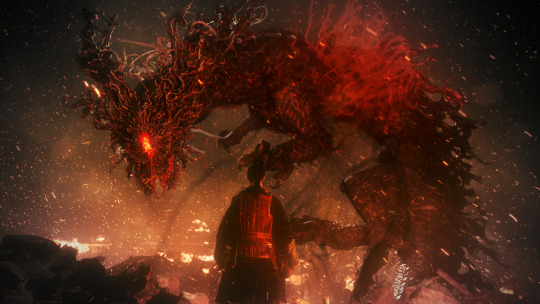
Addendums, Archives and Appendecies is extra, off topic writing in addition to the regular CANON FIRE entries. You can support more writing like this on Patreon.
Wo Long: Fallen Dynasty is the latest in Team Ninja’s series of flagship action games, a fantastical take on the beloved Chinese saga of the Romance of the Three Kingdoms. Its unique Spirit system turns the battle of wills into an explicit tug of war--pressing the attack and learning when to counter rewards you with powerful resources, while taking a passive or sloppy approach opens you to being cracked open. Personally, it’s one of the most interesting action games to come out in years.
Yet despite this, in discussions about Wo Long I can’t escape the feeling that I’m often not talking about the game itself, but only how it compares to another game: Sekiro. Every conversation is framed by it, dominated by it. As if there’s a secret desire for Wo Long to somehow be a sleeper sequel to Sekiro. Almost by necessity I find myself defending the fact that Wo Long is a different game, and that the differences in design are done with intent, and not inherently a flaw because they don’t conform to From Software’s mold.
Surface level comparisons between Wo Long and Sekiro are obvious: you can see the parallels between Wo Long Spirit system and Sekiro’s Posture--each allows you to break the enemy’s guard, with chances to intentionally step into their most dangerous attacks to mount a massive counterattack. Wo Long is the successor to Nioh and Final Fantasy: Stranger of Paradise, games where you fundamentally cannot deny the influence of Sekiro and the Souls series. Despite that, Team Ninja’s games are easily the most comfortable with remixing, reappropriating and recontextualizing those ideas, even more than Fromsoft themselves.
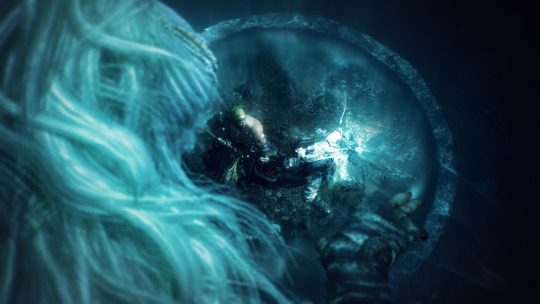
Think about how Nioh’s Ki system not only rethought the Souls stamina with the Ki Pulse, but also gave enemies a stamina bar, and let you break their guard by watching their attacks and attacking their stamina. The effect isn’t dissimilar to Sekiro’s Posture system, and it’d be easy to claim the influence it had on Nioh--if it wasn’t for the fact that Nioh released TWO YEARS before Sekiro.
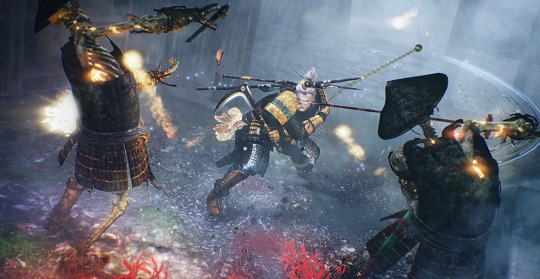
Wo Long’s more streamlined approach to this combat tug of war is the result of nearly four games of mechanical iteration, starting from Nioh. Nioh’s Ki Pulse allowed players to refill the stamina bar with several actions, creating an expressive system that allowed them to continuously pressure enemies--as long as they were willing to risk not having anything in reserve when it came time to defend. Nioh 2 iterated on this with an expansion of the tools available.
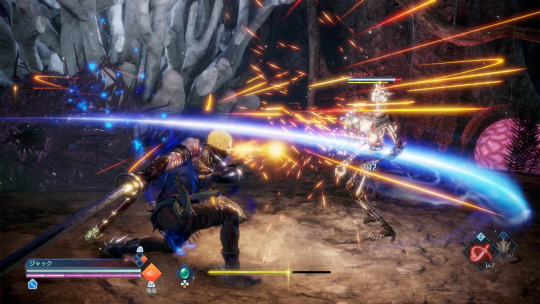
Stranger of Paradise streamlined this system for a mass audience, turning it into a Break system that allowed you to have an unstoppable defense, as long as you spent your resources carefully. Countering enemy attacks could snatch them for yourself, and successful defense increased your MP bar, allowing you to frequently spend resources for power skills and spells. Depleting the enemies Break Gauge was crucial to this, with big finishers providing the main form of resource gain. All of this was bolstered by its version of the signature Final Fantasy Job System, allowing you to switch between movesets and abilities on the fly, replenishing your Break Gauge as you did.
Wo Long makes this tug of war explicit. Attacking and counter attacking add to your Spirit Gauge, allowing you to spend it for big damage, and blocking pressures you until you break right open. In a neutral state your abilities are always available, essentially making resources unlimited, as long as you’re willing to take the risk of being crippled by your spiritual debt if you take a hit. It’s a smart and easier to parse iteration of the mechanics Team Ninja has been playing with for half a decade now, leading to unconventional approaches to combat, and what I’d argue is the most thematically resonant version of their mechanics. What could be more perfect for a story about wills and philosophies vying for supremacy than a system that literally has you breaking the enemy’s spirit to gain advantage?
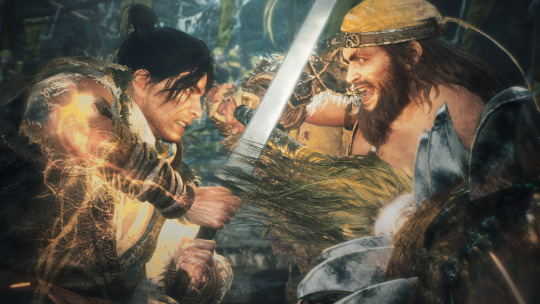
I rarely hear any of these ideas come up in conversation about Wo Long. Instead I often heard that people never played Team Ninja’s previous games, or skipped them after a brief look because the games didn’t play to their expectations of what they wanted from an entry in this genre. I don’t begrudge anyone for not playing through a game they don’t enjoy, let alone believe they have to play several full length RPGs before trying a new one. But it is frustrating to hear the same conversation everywhere, with every complaint wrapping around to how From Software does things, and how each Team Ninja game fails to adhere to it.
We’re over a decade removed from the first Souls series release, and half a decade from Team Ninja’s first entry in their own interpretation. The “Soulslike” genre has matured now, and it’d be disingenuous to frame games playing in this space exclusively by what they steal from the Souls series, rather than their own interpretations on a shared understanding and design language. The same way that “Metroidvania” and “Doom-clone” can limit our understanding of what’s permitted in a space, holding Fromsoft’s blueprint as the ideal can prevent us from approaching new works on their own terms.
Look, I get it. In terms of mindshare it’s hard to avoid the high profile gaming events that each Fromsoft release has become. Each game is developed with the hype, polish and budget of a company able to throw their weight around to get as much time and money as they need to finish a title. Everyone played Sekiro, even people who didn’t enjoy Fromsoft’s previous work.
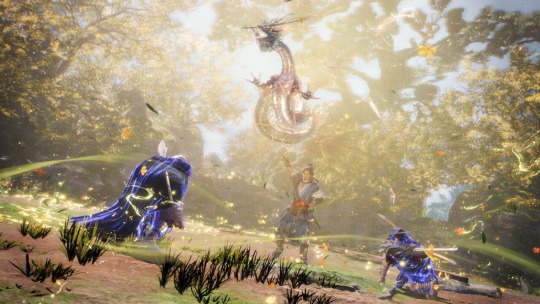
For comparison, Elden Ring took close to five years to complete, during which Team Ninja put out THREE GAMES iterating on Nioh’s ideas. Not to mention co-developing Fire Emblem Warriors, Marvel Ultimate Alliance, and putting out a new entry in the Dead or Alive series, along with multiple spin offs.
And for all the legitimate faults that Team Ninja games have (like the insistence on having the worst managed loot system to exist), they also bear clear indications of a development cycle limited on time and resources. Their titles are often cobbled together with as many existing resources as possible, reusing and remixing concepts and designs to keep the next game fresh. It leads to a lot of rough execution, but lets them rapidly iterate in a way that makes every entry fascinating.
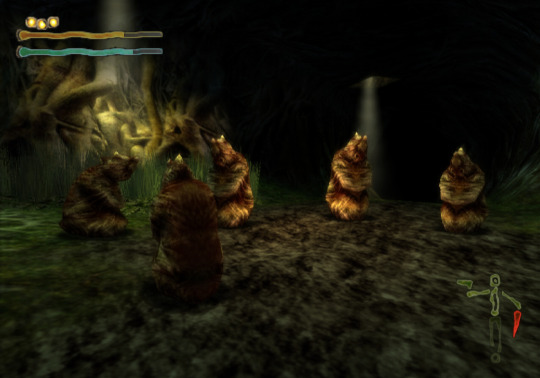
What people forget is that From Software used to develop games exactly like this. Before they were the AAA developer who dominated the charts they were a mid-tier developer that rapidly iterated on the same ideas, while pushing out plenty of offbeat genre entries, many of which were never given any real critical understanding. You could argue that it was exactly the two decades of iteration that led them to the success of their current formula, with changing tastes allowing people to not only catch onto the appeal of Fromsoft’s games, but titles like Wizardry and Druaga that it was influenced by.
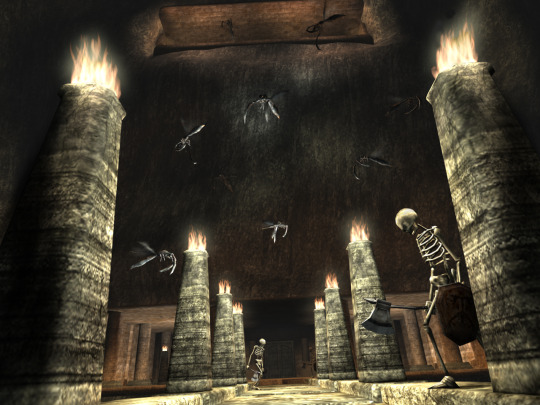
So it’s frustrating that the same generosity that’s allowed people to enjoy Fromsoft’s work and reevaluate their history also has people dismissing the games that take influence from them. The framing of a subject can change how we approach it entirely. The pull of history is powerful, and the gravity of genre sets our expectations and desires. To say that we can escape drawing comparisons to popular titles would be futile, but we can never see a complete picture of history from within the moment.
Letting a title stand on its own, and asking us what it attempts to do, and how successful it is within its own bounds can give us a more interesting and critical viewpoint, even if we come to similar conclusions. Judging a game by its ability to replicate the success of others is equally as futile and shallow as expecting the comparison to be removed entirely.
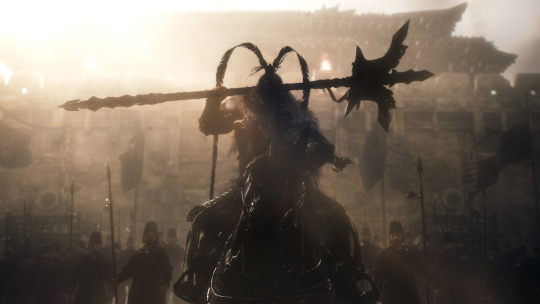
Team Ninja’s games in particular have arguably matured into their own, away from the usual trappings of the genre. The Souls elements--the RPG progression, the corpse run mechanics etc.--aren’t there to pay homage to Fromsoft’s work or try to replicate it, they’re tools Team Ninja have made their own. Team Ninja isn’t using these tools to replicate the effect, they use them for the same reason Wo Long is also a cooperative loot grind: because that’s simply what action games are now..
For better and for worse, Team Ninja is making modern action games, and that’s the template. Titles like Devil May Cry, Bayonetta, and Team Ninja’s own Ninja Gaiden once set the standard, but have waned in popularity. To the point where the same people who pioneered the genre are themselves making their own attempts to integrate those modern elements, often to mixed results.
Team Ninja have repeatedly managed to synthesize pop elements into their own identifiable style, and remained consistently interesting despite their flaws. And if you look, I’m sure there’s many more games in the space that remix the formula in their own, compelling ways. It’s a shame that the shadow of Fromsoft’s monolith always seems to obscure so many other legitimate approaches. But the thing about shadows is that they transform with a little light from a different perspective.
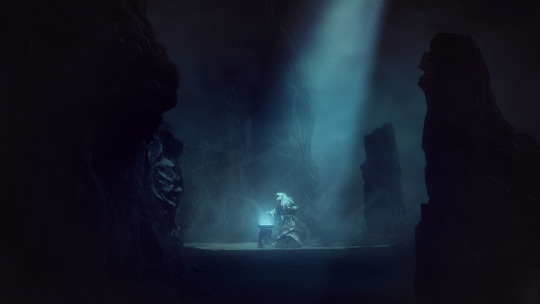
#Addendums Archives and Appendecies#canon fire#team ninja#wo long#nioh#stranger of paradise#final fantasy#dark souls#from software
40 notes
·
View notes
Text
+000: Mega Man Zero, the series that took me nearly two decades to learn
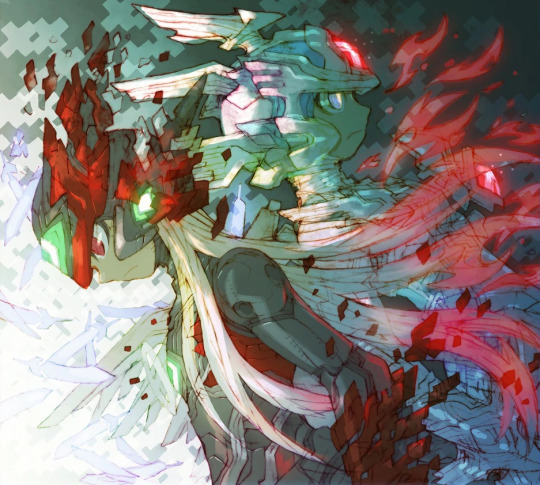
Addendums, Archives and Appendecies is extra, off topic writing in addition to the regular CANON FIRE entries. This entry is intended as a sampler for future entries that will be added upon reaching the third Patreon Goal.
You can find the footnotes for this entry, as well as support the project, on Patreon.
Set 100 years after the end of the Mega Man X series, the Zero games plunge the titular character into an apocalyptic world far removed from his understanding(1). And to reflect this, each encounter has turned into a deathtrap, with even basic knowledge of the world and game systems denied from you.
This punishing, obtuse style has drawn facetious comparisons to Fromsoft’s recent titles, but in learning to play Mega Man Zero, I found the experience more similar to learning fighting games, Ninja Gaiden Black(2) or uh, Sonic Lost World (3). Like those titles, Mega Man Zero offers you next to nothing in terms of guidance, fails to explain basics nearly essential to playing the game, and has to be learned by seeking outside resources and imitating others techniques. Inti Creates made a game that’s almost impossible to enjoy blind, which I can only recommend with a mountain of caveats and an encyclopedia worth of tech.
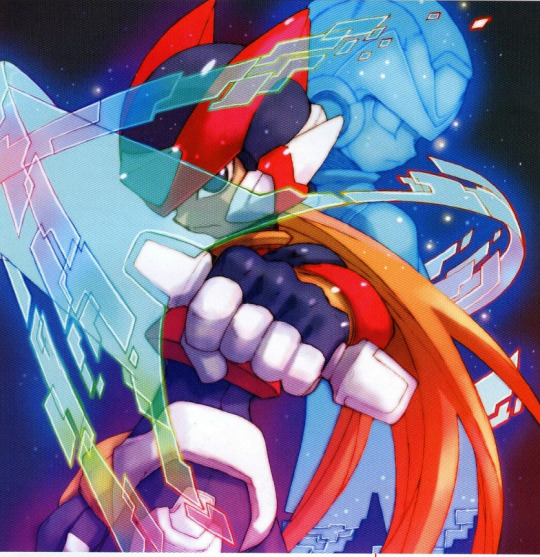
All of this went over my head as a teen, where I played them day and date with the physical releases via leaked ROMs(4), with save states to sand off any rough patches. It was only years later when I attempted a “proper” playthrough of the games as part of the DS collection that I learned how harsh the series could be. Later releases of the games attempted to mitigate this friction, often overcompensating and removing some of the original appeal in the process. (5)
So finally, after growing frustrated with the less than ideal handling of the games in the Legacy Collection, I went back to my roots and straight up emulated them. This time armed with not only save states, but rewind, better controls, and a stream of new tech learned from videos, guides and speedruns. (6)
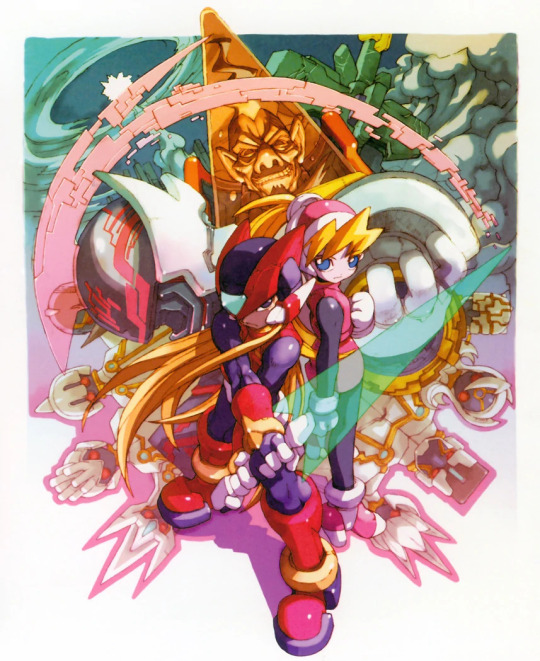
One of the most critical, and increasingly obtuse, mechanics to understand is the combo system. Most games use hitstun to communicate your ability to do combos, putting enemies into a state of inaction where you can follow up with another attack for guaranteed damage.
Because the Zero series is part of the larger Mega Man series it inherits certain aspects and behaviors from it. Only certain enemies visibly flinch when taking damage, though most of them can be attacked and comboed indefinitely, due to their lack of invincibility frames, or I-frames(7). Bosses, like in the Classic and X series, go into a long period of invincibility when hit. Generally speaking, this is why charge attacks and boss weaknesses are so valuable--if a single shot that does 1 damage triggers the same amount of I-frames as an attack that does 4 times as much, it's going to be more effective and efficient to use that weapon. Later games in each series also introduce a flinch animation, which interrupts boss attacks and more clearly communicates the extent of the damage.

In the Zero series these rules are still in place, but what it doesn't tell you is that bosses can also be damaged during their I-frames. Only certain attacks can do this, and they need to be followed by the appropriate attack in order to continue the combo. For example, in Zero 2 you can begin with an EX Move (8), follow with Zero's 3-hit saber combo, then end with a charged chain rod spin to cause massive damage. Learning and applying these combos can let you defeat some bosses in under 10 seconds, less than it takes for them to give their intro speech. A far cry from the long, tense back and forths you'd get if you otherwise waited for their I-frames to end each time.
The caveat is that unlike other combo systems, the bosses will often still be able to attack during the entire combo. Thanks to that, poor positioning can often get you hit during an attack, and deploying combos at inopportune times will see you be interrupted instead. Bosses will also continue to visibly be in I-frames the entire time, and only keen eyes and ears will notice health bars and sound effects indicating the damage.
If that wasn't enough, the combo system changes with every entry. The first game acts more like an extension of the exploits found in later X series games, with the Boomerang Shield and Chain Rod combos acting like the Saber-dash-cancel that prevented bosses from triggering I-frames. Zero 2 establishes an early form of the hit priority system, with 3 and 4 following up on it to develop a full combo system.
Not a single one of these mechanics, or the hit priority values essential to building combos, are ever surfaced within the game. The community has essentially compiled all these resources through years of experimentation, stripping the game down and explaining the theory behind the tech in the same way they used to develop combos or learn frame data (9) for fighting games.
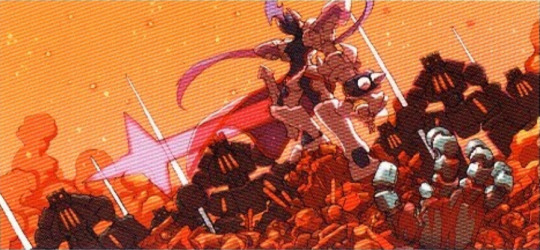
The same applies for the supporting mechanics: Cyber Elves(10), the rank system, Chips, crafting and etc. can all make the game much easier to get through, and give you some choice in how hard you want to make a particular playthrough, but none of it is explicated, and the details often change between games in ways that aren’t explained. Abilities that you used to rely on are frequently earned in a totally new way in the next entry, leaving you to scour an FAQ to see how to earn it again.
Despite all of these struggles, I still managed to come away with an appreciation of the series, almost two decades after they originally released, and multiple attempts along the way. The ability to save state took away the harsh penalties that frustrated me, and allowed me to experiment and learn its systems and boss patterns. Eventually, I started to return to the Zero Legacy Collection to practice certain stages and bosses, and at some point I’ll probably do a “proper” run through the series.
I’m not someone who’ll tell you to push through the suffering to get to the reward. If I don’t vibe with at least some aspect of a game immediately, it’s hard for me to care enough to keep learning it.
Against all odds, I found myself doing exactly that here, and being rewarded the deeper I dug. Maybe it was the powerful aesthetics, or the promise of a greater understanding of one of my favorite game worlds that pushed me through. It took a mountain of effort, the guidance of many, and a new approach–on my terms–but after so many years I’ve finally made my peace with the saga of Mega Man Zero.
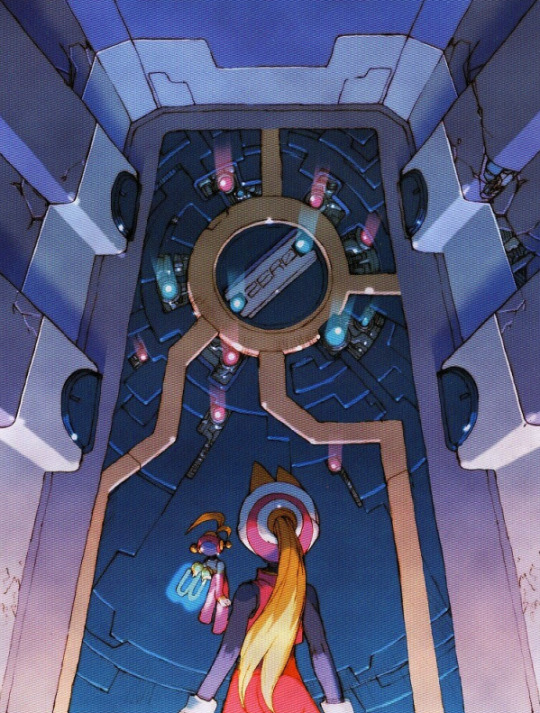
4 notes
·
View notes